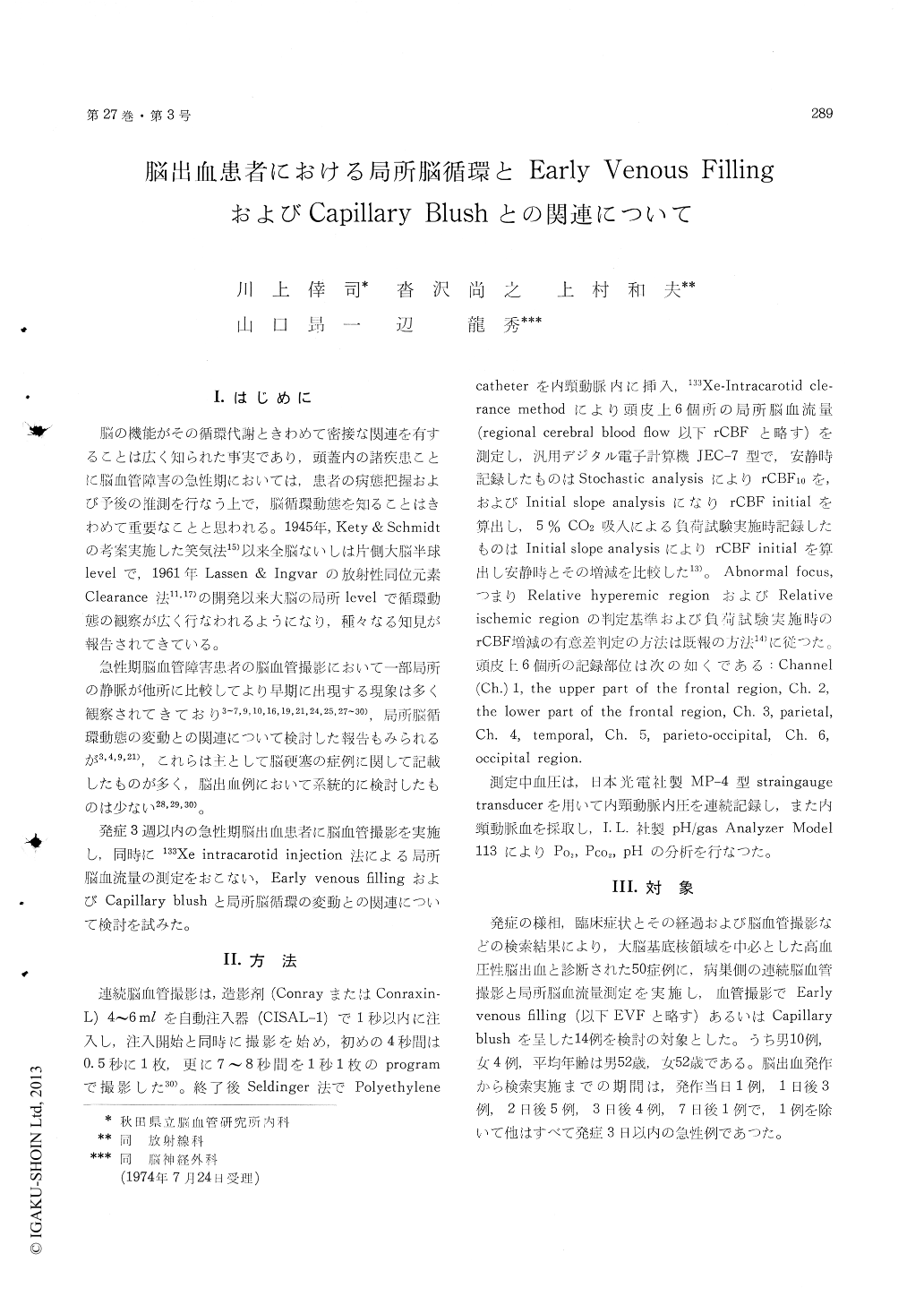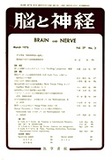Japanese
English
- 有料閲覧
- Abstract 文献概要
- 1ページ目 Look Inside
I.はじめに
脳の機能がその循環代謝ときわめて密接な関連を有することは広く知られた事実であり,頭蓋内の諸疾患ことに脳血管障害の急性期においては,患者の病態把握および予後の推測を行なう上で,脳循環動態を知ることはきわめて重要なことと思われる。1945年,Kety & Schmidtの考案実施した笑気法15)以来全脳ないしは片側大脳半球levelで,1961年Lassen & Ingvarの放射性同位元素Clearance法11,17)の開発以来大脳の局所levelで循環動態の観察が広く行なわれるようになり,種々なる知見が報告されてきている。
急性期脳血管障害患者の脳血管撮影において一部局所の静脈が他所に比較してより早期に出現する現象は多く観察されてきており3〜7,9,10,16,19,21,24,25,27〜30),局所脳循環動態の変動との関連について検討した報告もみられるが3,4,9,21),これらは主として脳硬塞の症例に関して記載したものが多く,脳出血例において系統的に検討したものは少ない28,29,30)。
Out of 50 cases with the hypertensive intracere-bral hemorrhage in the basal ganglionic area within three weeks after onset, "early venous filling" could be observed in 14 cases and three cases of them showed "Capillary blush" on their serial carotid angiograms. After cerebral angiography on the diseased hemisphere, regional cerebral blood flow were estimated by 133Xe-clearance method both at the resting state and at the functional test by 5% CO2 inhalation. Regional cerebral blood flowwere measured at six regions on the affected side as follows : Channel 1. (upper part of the frontal region), Channel 2. (lower part of the frontal region), Channel 3. (parietal), Channel 4. (temporal), Channel 5. (parietooccipital) and Channel 6. (occipital region). Clearance curves obtained were calculated by the Computer system reported already.
1. Early venous fillings in the 14 cases were located in the areas surrounding the hematoma and it was supposed that venous blood flow would be relatively increased in these areas. In three cases with capillary blush out of 14 cases, two showed these phenomena in the neighbouring parts of the lenticulostriate arteries, and the remaining one with the temporal extension of hematoma exhibited this sign in the parieto-occipital area, that is, all of three cases had "Capillary blush" in the regions where early venous fillings could be observed.
2. Regional cerebral blood flow in all but one of the cases was lower than that in the normal subjects and relative hyperemia was observed on nine regions in seven cases, however, six regions in five cases out of them showed the good cor-relation with the angiographical findings "early venous filling" and only three regions in two cases had coincidence with the "Capillary blush". It was also known that CO2 response was conserved well in each of the relative hyperemic regions which corresponded with "early venous filling" or "Capillary blush".
The correlation between the regional circulation and the angiographical findings, "early venous fill-ing" and "Blush", is not always clear and this is appreciably different from the results in patients with cerebral infarction. It is perhaps due to the followings : in cerebral hemorrhage, regional circu-lation would be influenced not only by location and size of lesion but also by extent and its direction of hematoma. At the same time, secondary changes, that is, cerebral edema of surrounding area and elevation of intracranial pressure would make the derangement of cerebral circulation more complex.

Copyright © 1975, Igaku-Shoin Ltd. All rights reserved.


